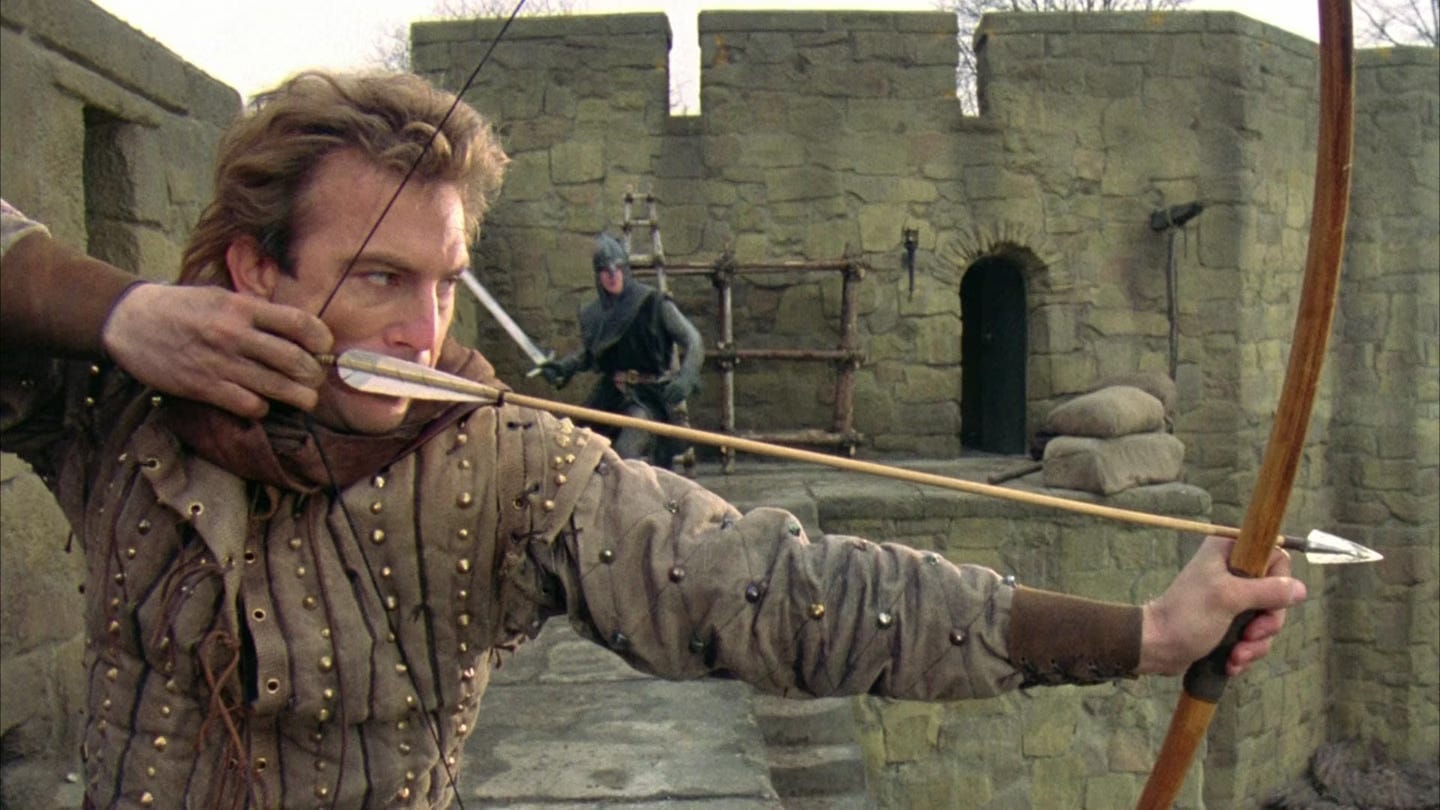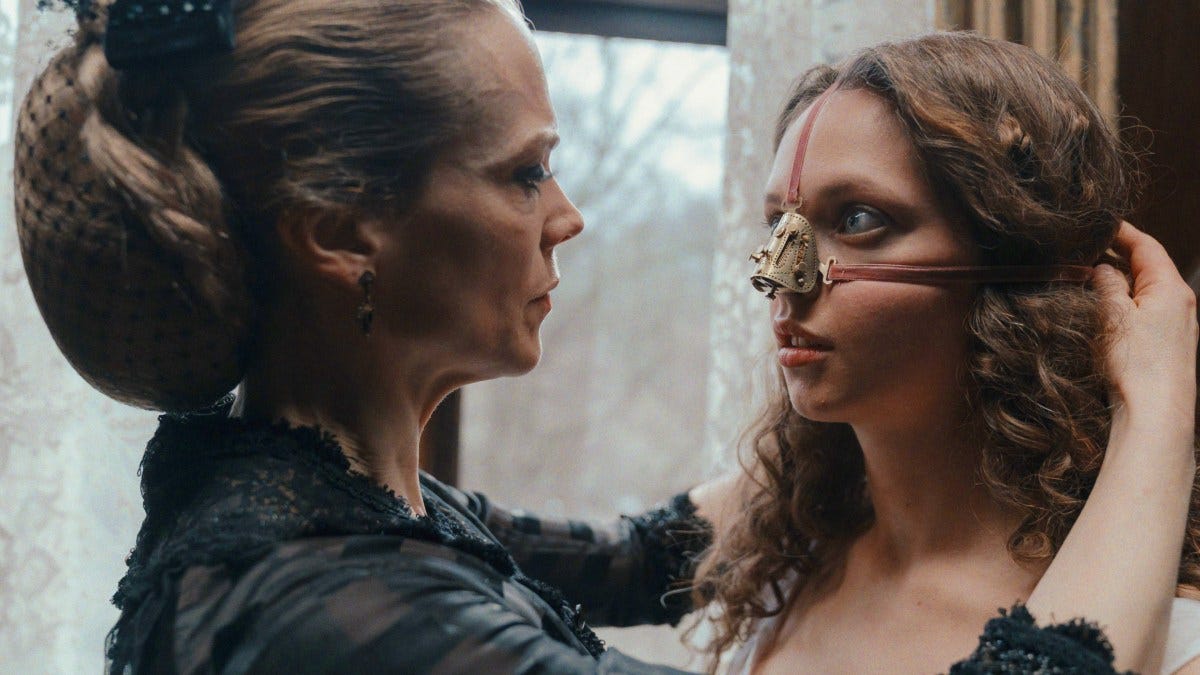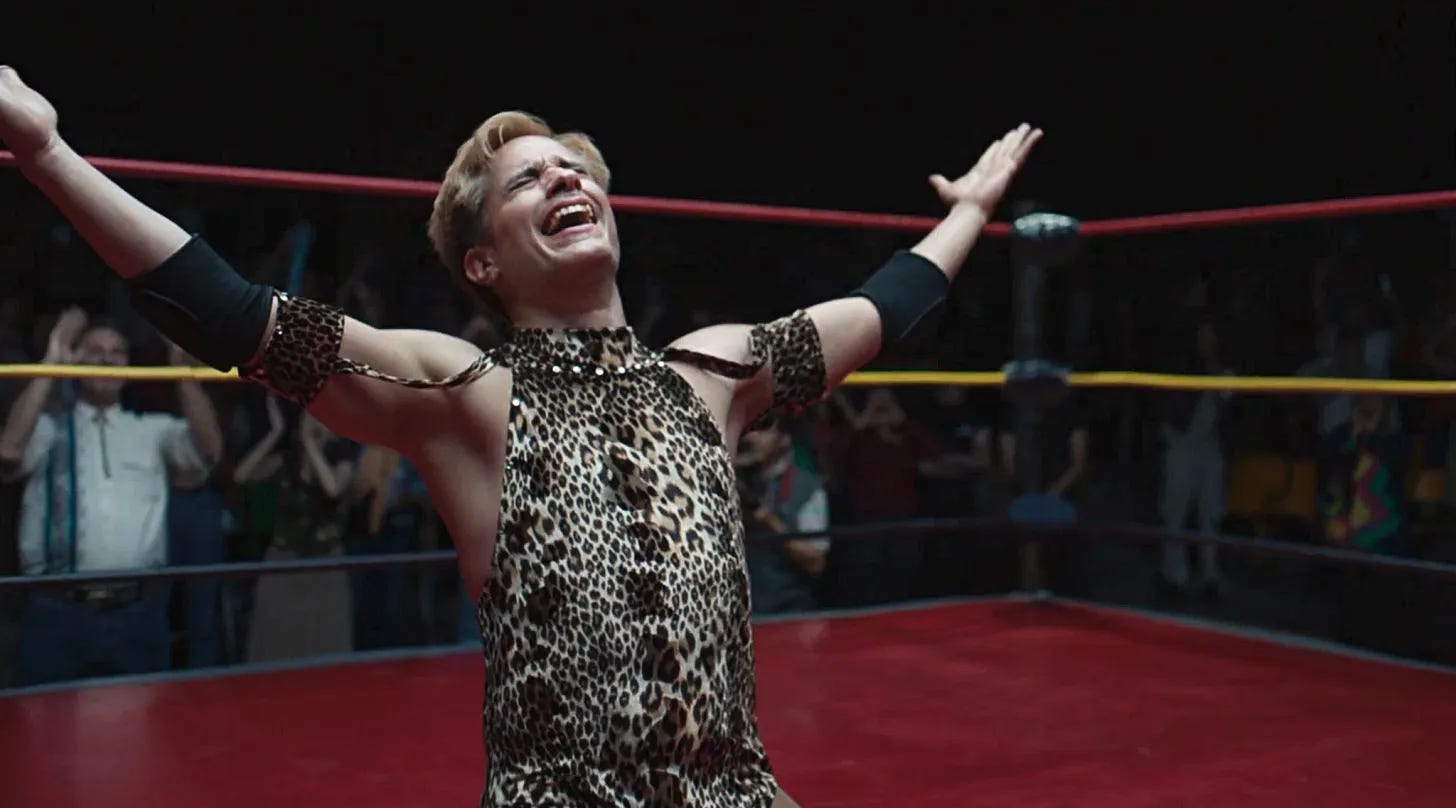Essay: Hark! I rewatched 'Robin Hood: Prince Of Thieves'
And loved every corny, silly, mulleted second of it
America was in a merry mood in 1991. The first Iraq War ended earlier in the year and was a spectacular success. ‘Gonna Make You Sweat (Everybody Dance Now)’ by C&C Music Factory was a beloved, unironic pop music hit. The last decade of the previous century was America on parade, in all her garish, greedy glory.
And the second-biggest summer blockbuster that year, sandwiched between instant classics Terminator 2: Judgment Day and The Silence of the Lambs, was a modern-day retelling of the popular public domain folk hero Robin Hood starring Hollywood’s hottest all-American superstar Kevin Costner—at the peak of his folksy, aw-shucks charms.
Had he been in better movies? Oh, yes. My guy was cashing in, though. This was his shot at a big-budget action movie franchise, and this was precisely that. It promised derring-do and historical accuracy, delivering on the former but falling short on the latter.
There were plenty of horses and castles and swordplay. The supporting cast was a motley crew of grizzled English stage actors adding a pinch of Shakespearean spice to an otherwise flavorless production. The vibe was very Rennaisance Faire: The Movie.
Directed by Kevin Reynolds, Robin Hood: Prince of Thieves is overconfident. It looks like it was made by a group of men who were convinced they were going to make the greatest, biggest, smartest Robin Hood movie ever, and to be honest, when I saw the movie as a teenage boy, I thought, “this is the greatest, biggest, smartest Robin Hood movie ever made” and I had never seen a Robin Hood movie. I’d seen Daffy Duck as Robin and Porky Pig as Friar Tuck in a Chuck Jones cartoon short, but that was it.
There are a few inappropriate moments in RH: POT, at least by today’s standards. For instance, a sexual assault is played for laughs. Yeesh. I could also argue that the movie was politically correct, which is what conservatives used to call “wokeness” back when they worshipped Republican president Ronald Reagan (yes, that long ago.) If there’s one thing you can’t accuse conservatives of having, it’s new ideas.
Once upon a time, movies and TV shows could be both progressive and thoughtless, frustrating everyone. But I didn’t care. I was seventeen and gross and dumb, and easily hypnotized by big-screen spectacles. Wow, thought young John DeVore, Kevin Costner is sooooo cool.
***
There are some twists to the famous legend. First and foremost, Morgan Freeman steals the movie as Azeem, a new character in the Robin Hood mythos, but a familiar 20th-century pop culture stereotype.
A kind Muslim who has a meet-cute with Robin in a Jerusalem prison, Azeem is your classic Hollywood sidekick of color. For decades, the industry loved pairing white heroes with wise and/or wisecracking non-white characters, some of whom spoke with strong accents. (Like The Lone Ranger’s life-partner Tonto. Does anyone remember The Lone Ranger?)
And yet, in this instance especially, Freeman and Costner have chemistry, and I dug the medieval Lethal Weapon energy.
The whole Crusades backstory works, even if that particular holy war wasn’t the West at its best. But screenwriter Pen Densham wanted to inject some diversity into his script, so history be damned. In Robin Hood: Prince of Thieves, Azeem is a charming, mysterious, technologically advanced guru who speaks perfect English with a foreign-ish accent. He loves Robin of Locksley because everyone loves Robin. Freeman’s Azeen is both a token and a refreshing addition to Robin’s band of merry men (and women). I’m positive there was some middle-aged right-wing crank back then who hated Azeem, and he probably still does, if he’s alive. The good die young, but hateful bastards tend to live forever.
***
Another twist: Robin Hood is from Southern California. The U.S. was so full of itself in 1991 that we all happily accepted a Robin Hood who talked in the blandest possible American accent. We turned one of the most beloved characters in all of English literature into a surfer dude. Why? Because we could. Imagine if Superman sounded like Piers Morgan. Heresy. But not to the world’s sole superpower! By the end of the year, the Soviet Union would collapse, marking the end of the Cold War. We were on top. Pax Cultura Americana.
You know who else adores Robin Hood? Hollywood. Nothing makes an entertainment executive happier than characters they don’t have to pay rights to use. There have been other big-screen adaptations of Robin Hood since Costner’s turn, most notably Mel Brooks’ send-up Robin Hood: Men In Tights.
Russel Crowe reunited with Gladiator director Ridley Scott to film an especially dreary Robin Hood in 2010, and a few years ago, the very talented Taron Egerton picked up a bow and arrow in an edgy, modern retelling of Robin Hood.
Not too long ago, I watched Disney’s 1973 animated version of the legend, imagining Robin Hood as a swaggering, oddly sexy fox. Since then, I’ve learned that one ex of mine is attracted to cartoon dogs jauntily wearing triangular green hats.
There is, of course, 1938’s The Adventures of Robin Hood starring swashbuckler Errol Flynn, a movie that still very much owns Sherwood Forest’s famous outlaw. That flick still looks great—the Technicolor is luminous, the sets are tremendous, and Flynn’s swagger is forever unbeatable. It makes sense that the defining film about a character most famous for redistributing wealth from princes to paupers would come out during the Great Depression.
The Prince of Thieves is my Robin Hood, though. For good or bad, Kevin Costner is my hero, swinging on a rope, riding a horse, smirking like a little devil when confronting danger. I will always associate Costner’s Robin with the movie’s theme song, Bryan Adams’ power ballad ‘(Everything I Do) I Do It For You.’ That’s a real ball-up-your-fist-and-feel-it-in-your-guts kind of banger.
***
So I rewatched it last weekend. It’s well-made and corny as hell. I can’t decide if one of the many ways the War on Drugs backfired was ridding movie sets of plentiful cocaine or not, but this movie could have used a lot more cocaine. But despite its earnestness and a slog of a third act, I loved every minute. The action is non-stop. Arrows fly. Kevin Costner is very good at shooting flaming arrows in slow motion.
He does this thing before he nocks the arrow, where he licks the feather vanes at the end of the arrow. I’m not sure if this helps, but it looks cool. Robin Hood is the original bow-and-arrow hero, the grandfather of countless imitators, from Rambo to Hawkeye to Katniss Everdeen.
The filmmakers—and Costner—understand the character, which isn’t always the case. You see, Robin Hood steals from the rich and gives to the poor. That’s his thing. Batman throws batarangs at murderous clowns, and Indiana Jones punches Nazis; Robin Hood pinches pouches of gold coins from the powerful.
The costumes are above average, featuring a range of layered, leathery, and textured earth tones, as well as hoods, capes, and well-worn boots. The famous scenes are there too, including a rousing first fight between Robin and John Little, who will earn the nickname “Little John” because Robin Hood is also the greatest wit in England. It’s a fine sequence, though. Methinks Costner doth wield a quarterstaff ably.
My favorite part of the movie is the elaborate Ewok-like treehouse village that Robin’s Merry Men constructed in no time. It is an intricate collection of intimate huts connected by suspended bridges and ladders.
There are also unlikely explosions and expensive non-CGI shots of arrows from their point of view. The arrow’s POV, you understand? What? Other splendid moments: Costner and Freeman are catapulted over castle walls. There’s a witch? A king’s feast. Oh, right, there’s a big 1991 cameo at the end of the movie, too, which I remember spoiling the minute I met someone who hadn’t seen the film because, in the early 90s, you could spoil shit. It wasn’t illegal.
If the movie works, and it totally does if you watch it with a heart full of forgiveness and in the correct cultural and historical context, it’s because the cast is absolutely solid.
As Lady Marian, Mary Elizabeth Mastrantonio is valiant as always. Please do yourself a favor and watch James Cameron’s The Abyss, his undersea alien epic. She is incredible in it. In RH:POT, she gets to bonk a bad guy on the head occasionally, but mostly, she’s a standard damsel in distress. But, you know, she’s a talented pro.
Robin Hood: Prince of Thieves also stars Christian Slater, who gets third billing.
Slater was sort of an anti-hunk, the star of a couple of dark teen comedies, like 1990’s Pump Up The Volume, where he played an adolescent pirate radio shock jock who spoke filthy truth to stuck-up power, and, of course, there’s 1989’s Heathers, the dark comedy about teen angst that was the first movie I ever saw that I thought was being honest with me about the world.
Slater plays Will Scarlett. He puts more effort into his English accent than Costner, but only a little. I was happy to see him in the movie, even if he seems shoehorned in. His character is mostly a nag — a real Negative Nancy — until a third-act reveal is pretty ho-hum.
Rewatching this Robin Hood made me wistful for the syrupy-voiced actor Alan Rickman, who passed away in 2016 at the age of 69. He was a great actor, capable of icy sarcasm and deeply soulful sincerity. He knew when to cut the ham thick for big studio productions like Die Hard and when to plumb the depths of his talent for more mature movies like 1995’s Sense & Sensibility or the underrated indie ghost story Truly, Madly, Deeply, which came out the same year as RH:POT.
As the villainous Sheriff of Nottingham, Rickman is a revelation, a comedic mustache-twirler armed with droll quips who is still formidable. For most of the 80s, antagonists were devoid of charm until Rickman. The hero was usually the one with the zinger, and then here comes Hans Gruber and Nottingham’s most infamous crooked cop — stone-cold killers, but funny.
One reason I love RH:POT is because I love Kevin Costner, and if this were a different essay, I’d defend his Oscar-winning directorial debut Dances with Wolves, an epic white savior movie about a Civil War vet stumbling into the middle of America’s decades-long internment and extermination of this continent’s Indigenous people. It’s a problematic movie, to be sure, but it’s also smarter than it’s given credit for, and it’s probably the best example of this kind of genre, which strives to teach a history that is either ignored or sanitized for political purposes.
Dances with Wolves blew up commercially and critically in 1990, which meant RH: POT was his follow-up. By that time, he wasn’t just an action star. He was a serious actor who could wear a wispy modified mullet in a period piece about a 14th-century outlaw.
And I’m not even mentioning Costner’s fun movies. I mean, baseball movies are a beloved genre, and there’s no better example than Bull Durham, a love letter to playing games for a living. I’ve written about Waterworld before, which combines two characters I love, Mad Max and Aquaman.
Costner is also one of cinema’s great cowboys, whether it’s in the movie that introduced him to stardom, 1985’s Silverado, or Open Range, a 2003 cowboy shoot ’em up co-starring Robert Duvall. Do not get me started on The Bodyguard. It’s his best movie. And Whitney? Amazing. I should probably write a couple of thousand words about that outstanding romantic thriller.
But back to Sherwood Forest, my merry friends. It’s too bad there was never a sequel: Robin Hood: Prince Of Thieves 2—Arrows On Fire. I recommend this movie to anyone gross, dumb, or born before The Matrix came out. Remember that everything Kevin Costner’s Robin Hood did, he did it for you. For us.









I liked this movie a lot as a kid. Morgan Freeman really helped. My best memory from this movie is in 6th grade my history teacher was tired of teaching history and two classes lnked up to watch this in the hopes it would do the job for her. Best part of the film is during the catapult scene when Christian Slater says, "Fuck me! He cleared it."
My teachers face turned beat red and we laughed until we could laugh no more.
The most interesting representation of Robin Hood on film was the UK TV series starring Richard Greene. Greene had a similar swashbuckling style to Errol Flynn but it was a co-pro with US production talent that had a particular sympathy for the hero’s redistribution of wealth as explained by this Wikipedia entry:
“The Adventures of Robin Hood was produced by Hannah Weinstein who had left-wing political views. The series was explicitly created by Weinstein to enable the commissioning of scripts by Hollywood Blacklist American writers.
Among these were Ring Lardner Jr., Waldo Salt, Robert Lees and Adrian Scott.
Howard Koch who was also blacklisted, served for a while as the series Script Editor.
The blacklisted writers were credited under pseudonyms, to avoid the attention of studio executives.
The sponsored prints of the first five episodes of series one, screened by CBS in the US on its first run, had no writer credits on their end title sequences; writers were only credited on sponsored prints from episode 6 onward, only later non-sponsored US re-run prints of series one have writer credits for these episodes, some of which differ from writer credits on UK prints. As an example, Lawrence McClellan is credited as writer of "The Coming of Robin Hood" on US prints, for the UK the pseudonym used is Eric Heath.
After the blacklist collapsed, Lardner said that the series' format allowed him "plenty of opportunities to comment on issues and institutions in Eisenhower-era America"
For my money no Robin Hood has equaled the Flynn epic but I have a bit of a soft spot for the Sean Connery - Audrey Hepburn “Robin and Marian” from the 70s mostly because of an insignificant sequence showing some of the Sheriff’s men training where one breaks from sword fighting to lean on his heavy blade and gasp “Shit I’m tired” showing that fighting with English broadswords was a little less athletic and graceful than depicted by Flynn and Basil Rathbone.. It wasn’t a great picture but it had similar elements of realism throughout that were groundbreaking for sword operas.